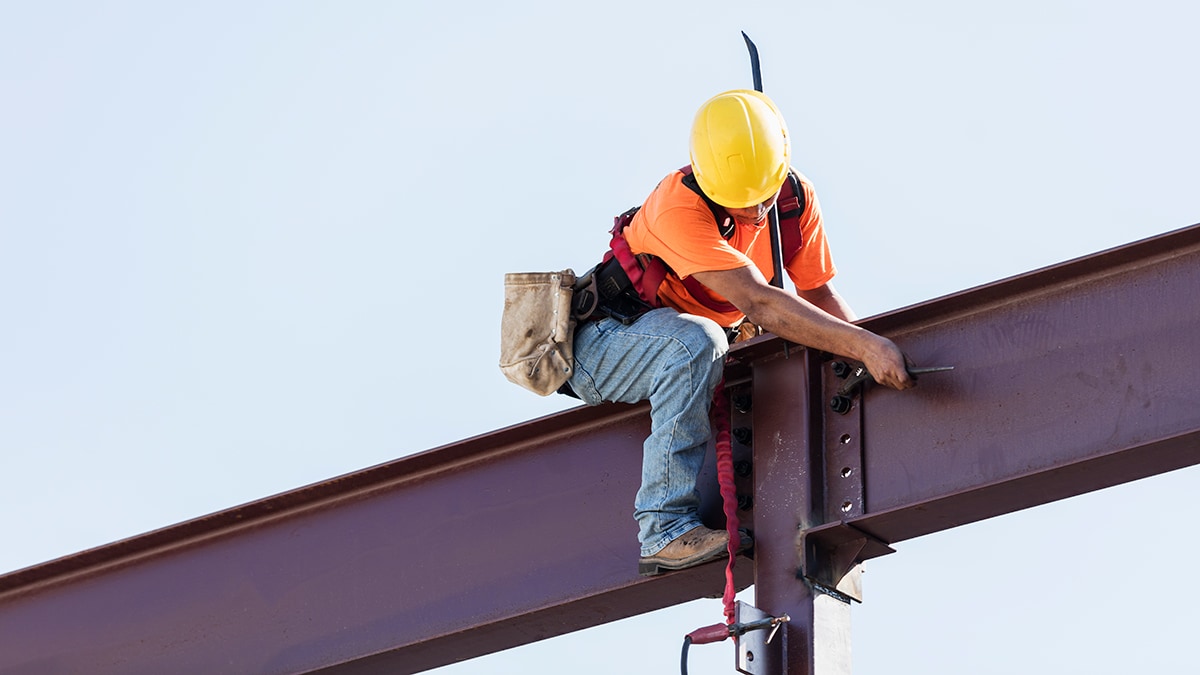Key points
- The National Construction Center addresses occupational health and safety hazards in construction.
- It has a strong focus on applied research and translation to prevent construction-related injuries and illnesses.
- CPWR-Center for Construction Research and Training has administered the National Construction Center since 1990.

Background
NIOSH funds a National Construction Center to address occupational health and safety hazards in construction. The Center conducts interdisciplinary research and outreach efforts. CPWR-Center for Construction Research and Training has administered the National Construction Center since 1990.
Construction workers have high rates of work-related injuries and deaths in comparison with other industry sectors. In 2022, there were 9.6 deaths per 100,000 full-time workers, compared to 3.7 deaths per 100,000 workers for all U.S. industries.1
Construction worksites are organizationally complex multi-employer sites. This presents numerous health and safety challenges. Many types of construction work involve potential hazards such as silica, noise, struck-by or welding fumes. Construction tasks can involve awkward postures and other risk factors associated with musculoskeletal disorders.

Funding Recipient
CPWR-Center for Construction Research and Training has administered the National Construction Center since 1990. It is a nonprofit located in Silver Spring, MD. CPWR is dedicated to reducing occupational injuries, illnesses and fatalities in the construction industry by:
- Building on its current base of knowledge and intensifying and accelerating the identification and adoption of evidence-based best practices
- Responding to the goals in the National Occupational Research Agenda for Construction and recommendations from the Construction Program review.
- Focusing more on research to practice (r2p)
- Being prepared to respond rapidly to emerging issues and trends
- Disseminating its findings in new and more innovative ways
- Tracking changes in the industry and evaluating changes in safety and health outcomes
Priorities
NIOSH places emphasis on
- Applied research
- Translation of scientific discoveries for specific users to prevent or reduce construction related injury and illness
- Effective prevention practices and products (research-to-practice),
- Education and outreach, and
- Sustainable partnerships
NIOSH also expects a robust data and statistical program capability. The Center must maintain a publicly accessible research-to-practice repository for construction hazards and solutions, educational materials, and other products.
Activities and Progress
Activities
CPWR conducts a range of research, training, and service activities to improve the safety and health of construction workers. It's also an integral part of the NIOSH Construction Program. For example, the two organizations collaborate on national initiatives to prevent falls and struck-by incidents.

Evaluation
A 2018 evaluation of the NIOSH Construction Program recognized CPWR for the value of its research translation. A peer review panel considered NIOSH-funded Construction research between 2007 and 2017 in the areas of:
- Silica
- Musculoskeletal disorders,
- Noise exposure and hearing loss
- Highway work zones
- Fall prevention
Funding sources
The cooperative agreement for the National Construction Center historically runs in five-year cycles. The current cooperative agreement under RFA-OH-24-001 has a project cycle from 2024-2029. Previously, NIOSH funded the Center from 2019-2024 under RFA-OH-19-001.
- BLS [2023]. Census of Fatal Occupational Injuries Summary, 2022. Washington, DC: Bureau of Labor Statistics. https://www.bls.gov/charts/census-of-fatal-occupational-injuries/number-and-rate-of-fatal-work-injuries-by-industry.htm
